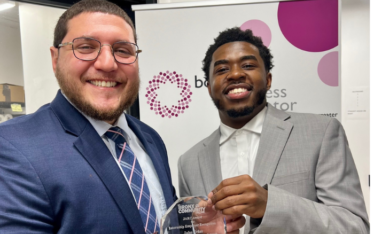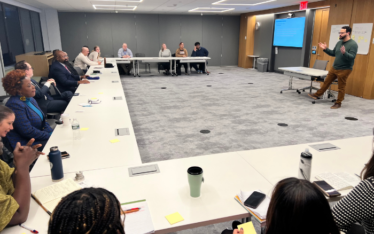Why Diversifying Postsecondary Education Can Create a Better Workforce for New York
We taught a professional learning module to New York City Department of Education teachers and counselors. One set the following goal: “To better assist my students to find their passion/career of their dreams. To have a career that they ultimately love.” – NYC High School Counselor
_________________
Over the past few years, NYC high school leaders, teachers, and counselors identified a need: they understood career planning with students was necessary, but they didn’t always know where to start, or have the resources and training to do so with confidence. As a first step to meeting this need, the College and Career Planning Team of the Office of Postsecondary Readiness at the NYC Department of Education (DOE) hired JobsFirstNYC to teach a Postsecondary Planning Practitioner Credential.¹ This credential is offered in the form of a Module with synchronous sessions and asynchronous work, to staff across their 500 high school system titled “Advising for Career Pathways.” In our Exit Ticket, one participant wrote, “After thirty years in the classroom, there aren’t many professional development sessions I get excited about. This is a clear exception!”
When JobsFirstNYC embarked on work in the high school system in 2017, the goal was always broad systems change across the city. Beginning with twelve transfer high schools, in partnership with New Visions for Public Schools, we launched the Transfer 2 Career Collaborative (T2C) to ensure students could access a full career development continuum while enrolled in high school, and leave school with a strong postsecondary and career plan. We partnered each school with workforce development institutions in order to bring the expertise into the school, and provide students with early on-ramps to postsecondary education and training. The effort supports our goal to eliminate or reduce the gap between (1) the point when a student completes high school and (2) the point when they enroll in postsecondary education or skills training or obtain employment. The development, implementation, change process and outcomes of T2C is documented in Innovations in the Field: Transfer 2 Career Collaborative, a practice paper published by JobsFirstNYC and New Visions. The outcomes of T2C led to the interest of the Office of Postsecondary Readiness and the design of this professional development for educators.
The bigger vision for T2C was always to inspire systemic change, by answering key questions including: 1) how can we reimagine schools to effectively embed career development and career pathways?, and 2) what systemic changes are needed to support this paradigm shift? Our partnership with the Department of Education also reflects a critical inflection point in the city’s education system as we ask ourselves: what is the purpose of school, and what are we preparing students for? This professional learning credential is an important step in bringing about citywide change. Through this Module, JobsFirstNYC provides counselors with the language, tools, and resources to support students to successfully navigate career pathways during and after high school. We are also working to stem the inflow of young adults into the out-of-school, out-of-work population by ensuring students leave high school with a clear vision for their future, a postsecondary transition plan, and a long-term career plan.
In the Advising for Career Pathways module, JobsFirstNYC aimed to provide counselors and teachers with the knowledge and skills to support students in planning their career futures, beginning with career interest. Learning Objectives for participants included:
- Understanding the foundations of career pathways, labor market demands, and growing employment sectors.
- Developing advising strategies and practices to ensure all students are on a career pathway and have access to skills training and certification opportunities.
- Identifying entry requirements for all major industry sectors, including degrees, certificates and/or work experience.
- Understanding how to find and vet high-quality certificate and job training programs
- Identifying the value and methods of pursuing career paths that do not require college degrees for entry. Locating entry points for integrating work-based learning and career development in schools.
The need for an adaptable and engaging model has been embraced by one high school counselor who pointed out that, “I would like to be able to help each one of my students choose the postsecondary option that is best for them. I want them to be aware of all of their options, and I want to guide them through researching those choices without my own biases and ideas impacting them.”
JobsFirstNYC will facilitate additional Modules in Spring 2021, continuing to support NYC schools in this shift from college to multiple postsecondary pathways, and from college readiness to integrating career preparation. Embedding work-based learning and career development in high school offers students the necessary opportunity to explore their interests and develop clarity and motivation about their futures.
As one optimistic participant put it, “I truly viewed postsecondary differently after this session. We often focus on the college part and not really the career portion, and I look forward to learning more.”
____________________
¹About the Postsecondary Planning Practitioner Credential (PPPC): The PPPC is a 20-hour, industry sponsored, professional learning and skill development credential offered citywide to staff (including counselors, advisors, teachers, social workers, CBO advocate counselors, LTW providers, etc.) who provide school-based postsecondary planning.





